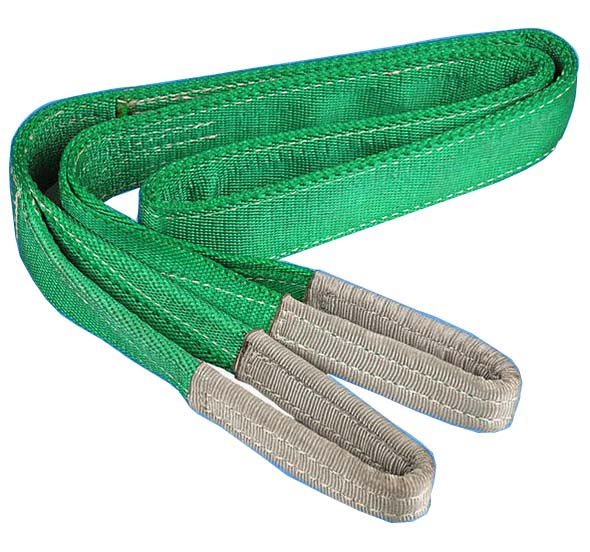Telephone
Conventional sling belt (synthetic fiber sling belt), generally made of high-strength polyester filament, has multiple advantages of high strength, abrasion resistance, oxidation resistance, UV resistance, etc., while soft texture, non-conductivity, no corrosion (no human body Any harm) is widely used in various fields. There are many types of slings. Conventional slings (according to the sling appearance) are divided into four categories: ring-through core, ring flat, double-eye through-core, and double-eye flat.

a. a single sling with a soft loop (consisting of a strap stitched into a loop at both ends);
b. Single sling with end pieces (slings with end pieces at each end of the belt);
c. a double sling (a sling consisting of two or more belts of the same width and placed side by side);
d. Multi-layer sling (made by stacking two or more layers of the same belt in the longitudinal direction);
e. Annular sling (one end of the strap is sewn together with the other end, or the strap itself is woven or wrapped into a loop without stitching).
6.3 Safety factor of the sling
The safety factor of the sling is about 6 for the suture strap or the package strap of the sling strap, and the safety factor for the strap end is 4 for the ultra-small safety factor of the strap.
a. Suspension breaking force: the sling can withstand the excessive load in the failure test, the unit is 10n;
b. Extra-large effective force (mfu): The super-large force allowed by the basic sling, the polyester sling unit is 10n.
Extra large effective force = sling destructive force / sling safety factor.
Hoisting method coefficient (gb/t 8521)
Hoisting method Hanging coefficient m Lifting method Hanging coefficient m
Vertical lifting 1 90. Angle lifting 1.4
Knot lifting 0.8 120. Angle lifting 1
Parallel lifting 2 2 limb lifting hoist 1.4